Art & Exhibitions
From Sublime Style at the Met to Frida Kahlo’s Wardrobe at the V&A, Here Are the 6 Most Inspiring Fashion Museum Exhibitions of 2018
Fashion infiltrated the international art world this year.

Fashion infiltrated the international art world this year.

Maxwell Williams

What a year for fashion exhibitions. Covering fashions both opulent and improvisational, timeless and timely, the shows held this year showed that fashion can be as comfortable in a museum as a supermodel in a sample size. Institutions gave fashion designers as disparate as Margiela, Alaïa, Dior, and Eckhaus Latta space in ways that allowed for a holistic reconsideration of fashion as art. Elsewhere, museums shined a spotlight on the way artists expressed themselves through fashion, as in the V&A’s exhibition about Frida Kahlo’s clothes.
Art and fashion have long been friends—but they’re usually separated as church and state. This year, as the Met exhibition “Heavenly Bodies” showed, perhaps church and state alike are just trying to look their best. And, of course, bring a trendier audience around to the museum.
Below, we recap the six most inspiring fashion exhibitions in museums this year.
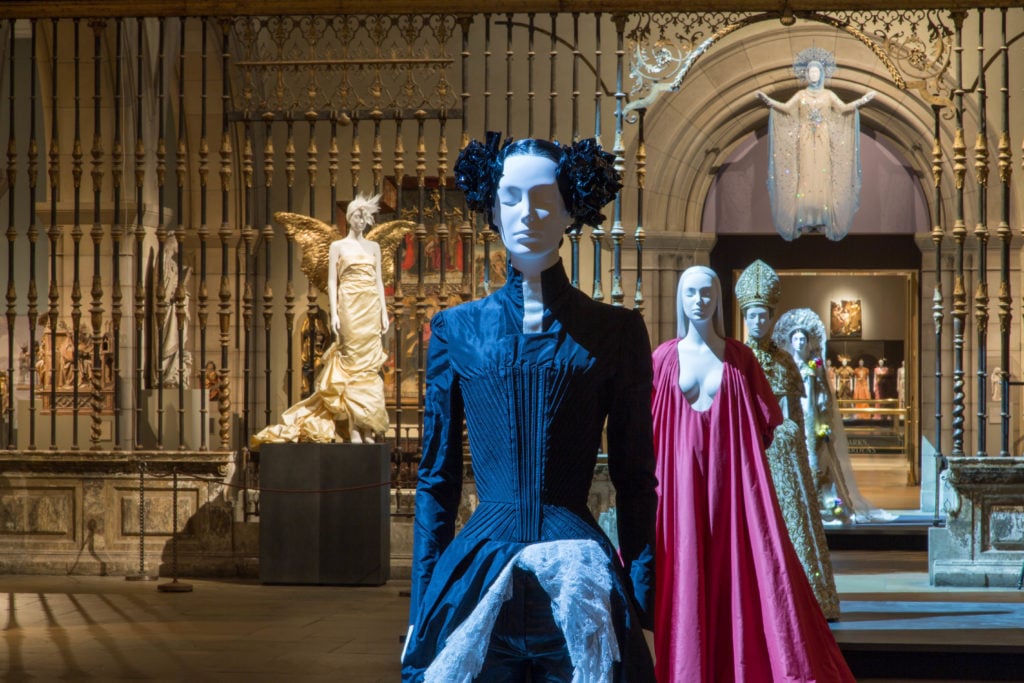
Gallery View, “Heavenly Bodies.” © Medieval Sculpture Hall at the Metropolitan Museum of Art.
After their almost unassailable 2017 Costume Institute exhibition “Rei Kawakubo / Comme des Garçons: Art of the In-Between,” anxieties about how the Met would follow it mounted. How can you top an exhibition about a fashion god? With literal godly fashion, of course.
Held at both the Met Fifth Avenue and the already sacramental Cloisters, “Heavenly Bodies” was quite the exploration into designers who were influenced by the plush history of the church. The heavily gilded and opulent garments that decked out the personage created a golden vein that designers have been tapping into for centuries.
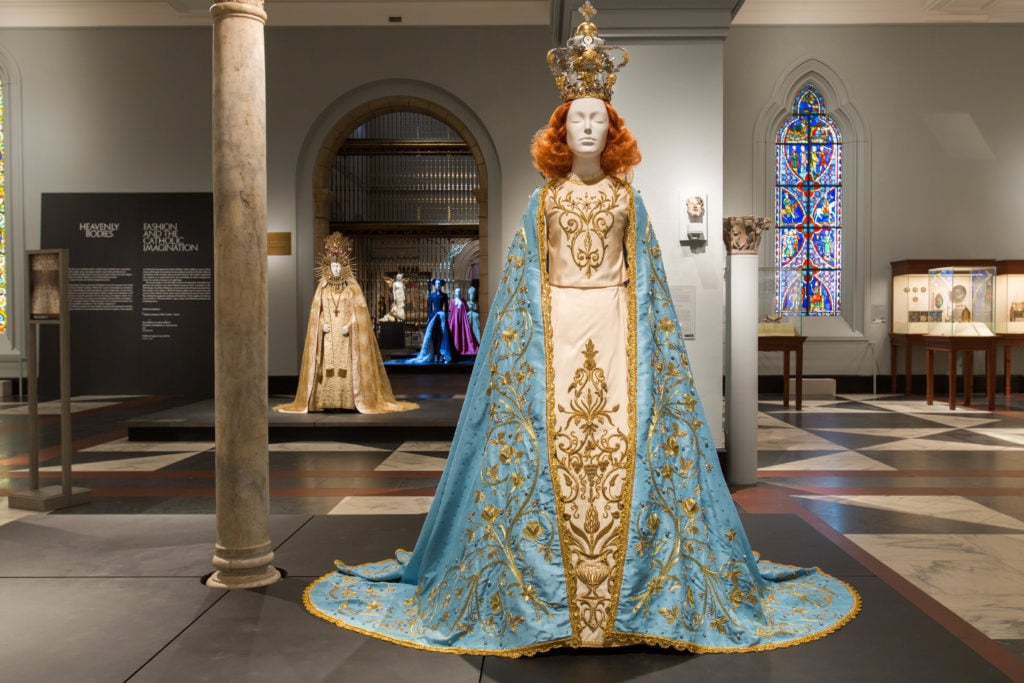
Gallery View, “Heavenly Bodies.” © Medieval Europe Gallery at the Metropolitan Museum of Art.
The show did a canny job illustrating the connections: Walk into the Byzantine Gallery, and you were confronted by a Gianni Versace dress with a crucifix on it, directly next to the very crucifix that inspired it. An Yves Saint Laurent “Madonna dress” hung out in the Medieval Europe Gallery. Balenciaga made dresses for a choir in 1945—those were displayed high overhead in a balcony on a choir of mannequins. Also included was a collection by Thierry Mugler from the 1980s called “The Winter of Angels” based on the Archangel Gabriel.
It’s all very dramatic. But the most dramatic part of the show (other than seeing Rihanna dressed as a pope at the on-theme Met Gala) was in the Anna Wintour Costume Center gallery, where the church lent the Met several pieces never seen outside the Vatican. They included a chasuble made by Henri Matisse, an intricately embroidered dalmatic worn by Pope John Paul II, and a papal tiara given to Pope Pius IX by Queen Isabella II of Spain adorned with 19,000 gems—mostly diamonds. While some questioned whether it was in good taste for the Met to combine the worldly with the sublime, the result unquestionably made for a visual feast.
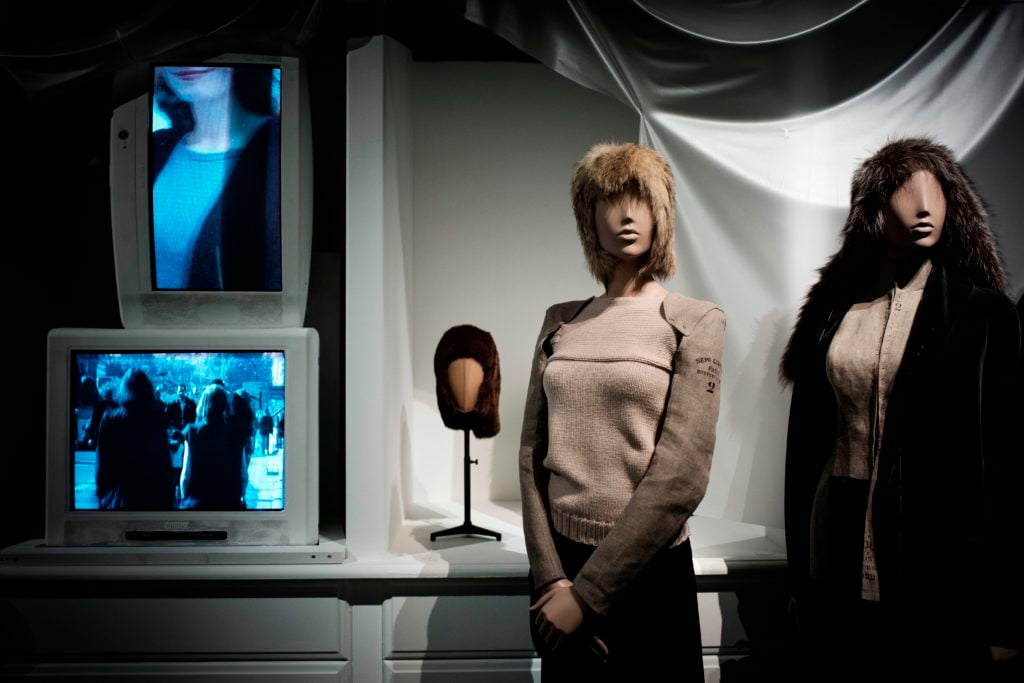
Installation views of “Margiela / Galliera 1989–2009” at the Galliera in Paris. Photo: PHILIPPE LOPEZ/AFP/Getty Images.
Maison Margiela made headlines this year for designing Rihanna’s papal attire at the Met Gala. But it’s best to remember that the fashion house was begun by an angel who fell… off the face of the earth in 2009. (A press release issued in December of that year announced matter-of-factly that the founder had “left the business.” He was replaced as creative director by John Galliano in 2014.)
Martin Margiela is known as being both an innovator and a disciple of the Rei Kawakubo school of deconstructing fashion to its very core, before building it back up, thread-by-thread, until it is something completely new. The Belgium-born Margiela is known for being a complete recluse, preferring to direct all attention to the garments themselves, so the fact that this exhibition featured rarely seen house archives and even bore an “artistic director” credit from the designer himself is a testament to its completist feel.
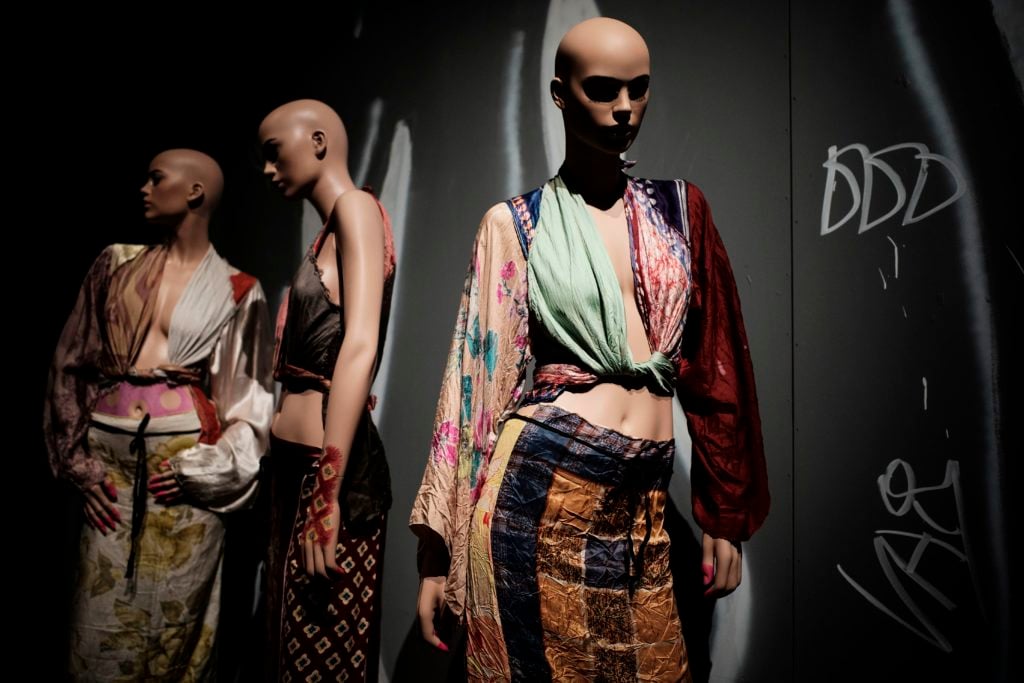
Installation views of “Margiela / Galliera 1989–2009” at the Galliera in Paris. Photo: PHILIPPE LOPEZ/AFP/Getty Images.
Margiela’s innovation is no more present than in examples from the perfectly gothy fall 1992 collection, the oversize pieces from the fall 2000 collection, and the totally deconstructed denim he showed in spring 2008—all styles we are now seeing come around again.
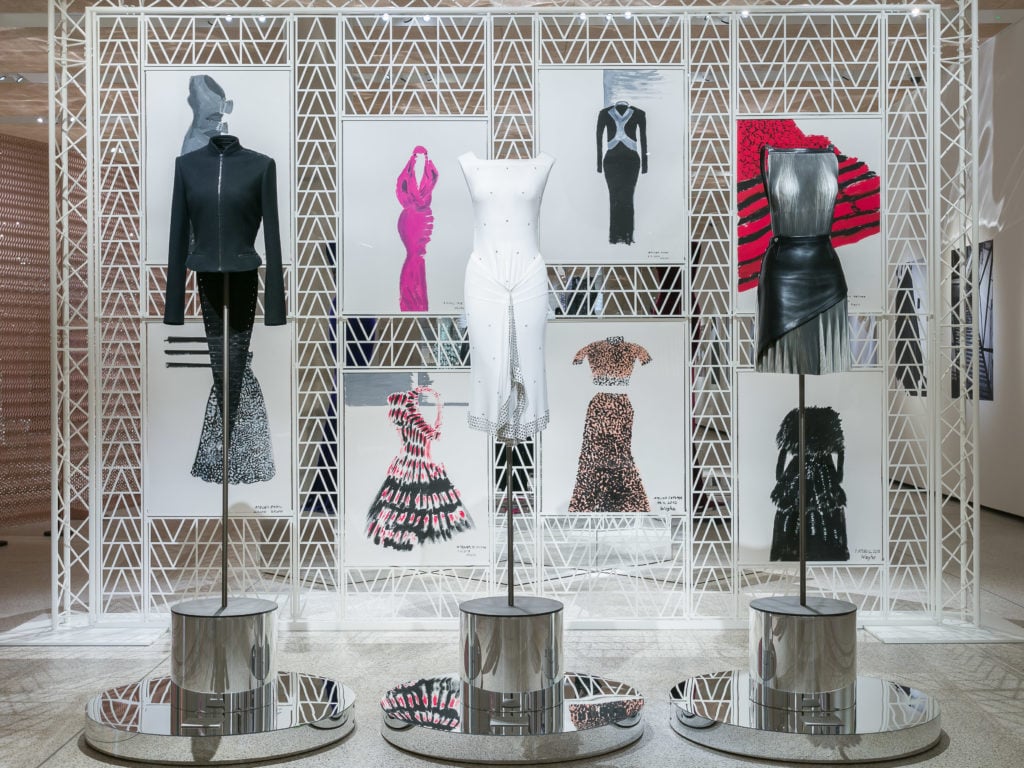
Installation view, “Azzedine Alaïa: The Couturier.” Photo © Mark Blower, courtesy of the Design Museum.
Alaïa. It’s a name spoken with an almost haunted reverence. Alaïa is one of the most singular figures in fashion, and his name is almost synonymous with couture. This exhibition was conceived by the designer himself before his death in November 2017. One of his signature innovations, the “bandage” dress, is among the most iconic dresses in fashion history, and it is shown at the Design Museum with the reverence it deserves—simply, on a silver pedestal, the light hitting it just right.
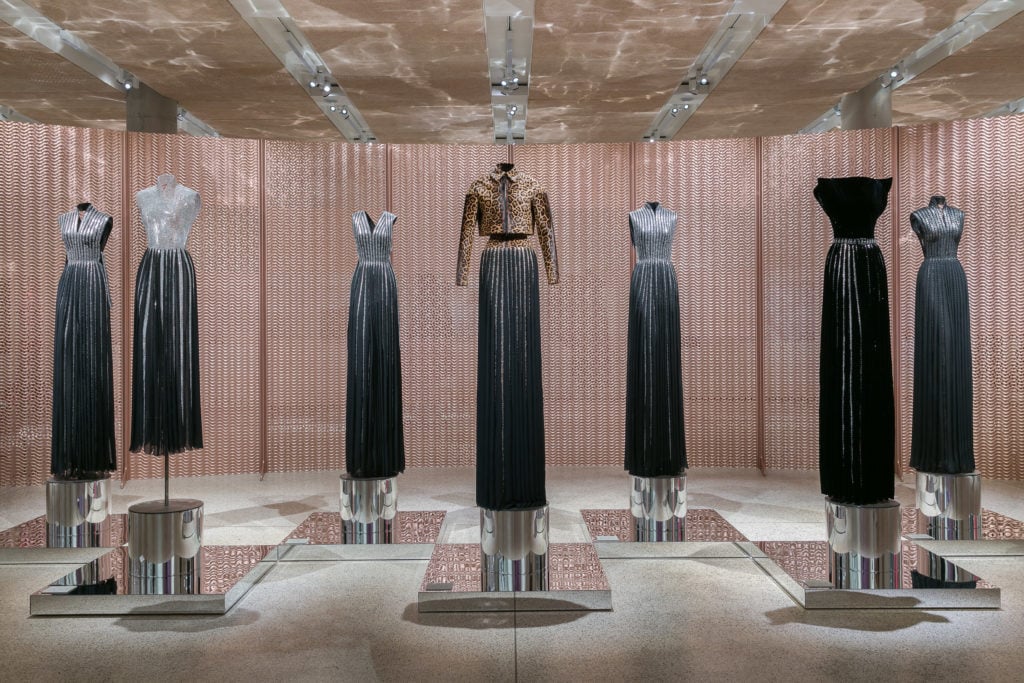
Installation view, “Azzedine Alaïa: The Couturier.” Photo © Mark Blower, courtesy of the Design Museum.
The rest of the show puts a similar glint on the designer’s other entrancing innovations: the zipper-bifurcated dress, the stretch body dress, the perforated leather dress—ballyhooed as much for their minimal grace as their construction. Alaïa’s studio was indeed a cut above, and this exhibition displayed that carefully.
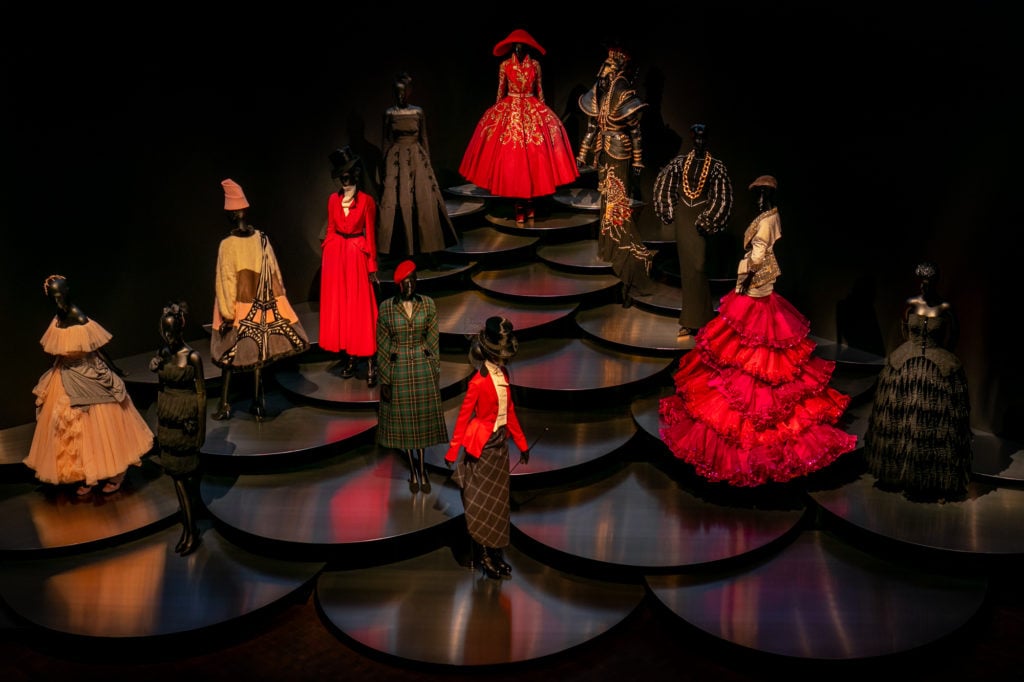
Installation view of “Dior: From Paris to the World.” Photograph by James Florio; courtesy Denver Art Museum.
Did you know that Christian Dior was an art gallery owner in the 1920s and ‘30s before he became one of the most influential fashion designers in the world? One benefit to celebrating this historic designer in a museum is learning just how much his career was influenced by the artist friends, such as Salvador Dalí, with whom he surrounded himself. But more than anything, he was influenced by something much more modest: the humble line.
“Dior: From Paris to the World” shows how Dior’s simple innovations revived haute couture, whether it was his H-line dress, the A-line, or the Y-line, and how the designer ushered in a new era with his revolutionary New Look collections of the 1940s and ‘50s.
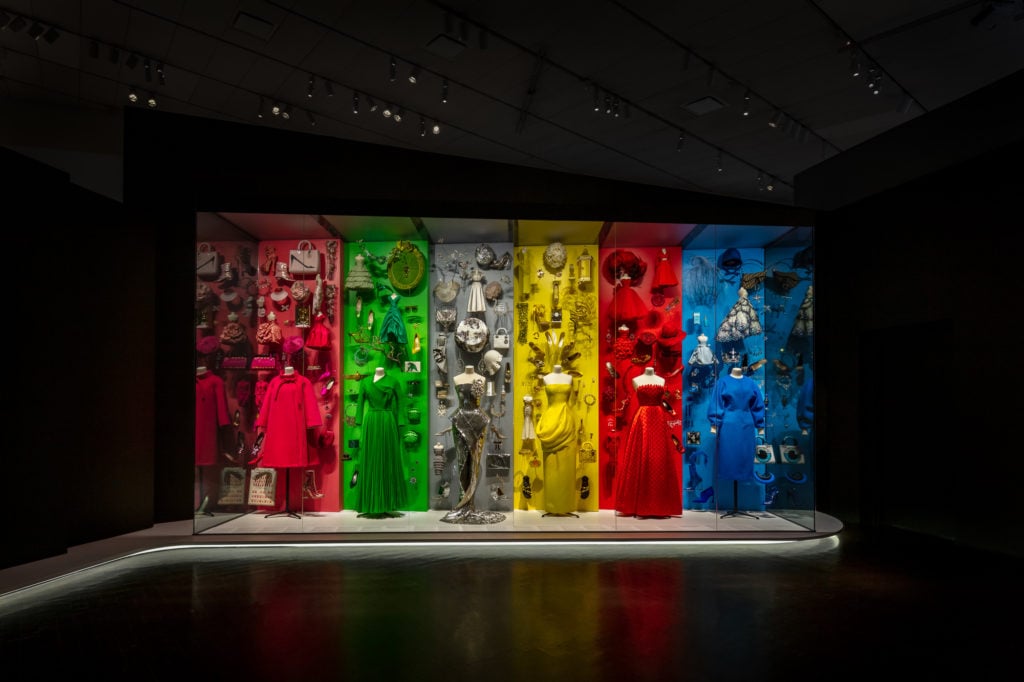
Installation view of “Dior: From Paris to the World.” Photograph by James Florio; courtesy Denver Art Museum.
An astonishing 202 looks from Christian Dior and those who would later take over designing for the house (Raf Simons, Gianfranco Ferré, John Galliano, et al) makes the first Dior retrospective in America a lot to take in. But the curation by longtime Dior historian Florence Müller (who now works as a curator of fashion and textile art at DAM) couches the development of the house in a broader history of fashion. A highlight is the “celebrity room,” where gowns worn by fashion icons (Lee Radziwill and Princess Grace of Monaco) are placed next to those worn by new Hollywood (Jennifer Lawrence and Rihanna). The show is on view now, through March 3.
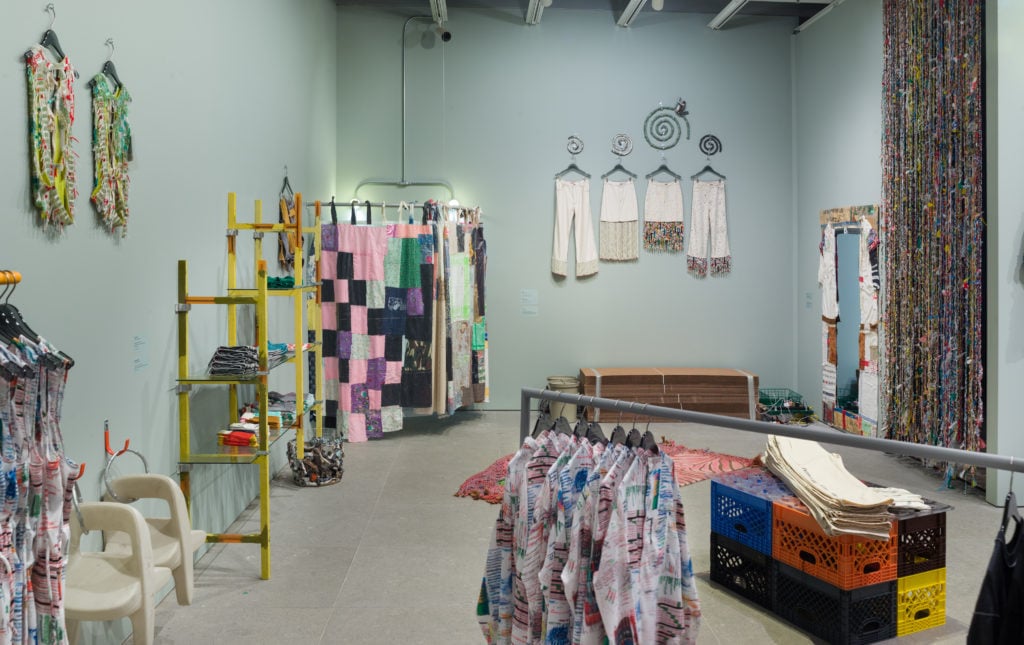
Installation view of “Eckhaus Latta: Possessed” at the Whitney Museum of American Art. Photograph by Jason Mandella.
Where “Dior” represents a look at timelessness in fashion, “Eckhaus Latta: Possessed” was very much à la mode. Meant to function as a boutique, the bicoastal design duo enlisted artist friends like Torey Thornton and Susan Cianciolo to design the benches and store mirrors respectively. In the back room, a Nam June Paik-like installation of askew televisions displayed surveillance footage taken of the front room just moments before—buy something, then see what that process looked like. The show didn’t rub everyone the right way—both because of the unorthodox display and the fact that it was the first fashion exhibition at the Whitney since a Warhol fashion retrospective in 1997—but the collaborative elements and the confounding bit of commerce-in-museum made the event intriguing and memorable. It helps, of course, that Eckhaus Latta’s high-concept clothes are already basically artworks themselves.
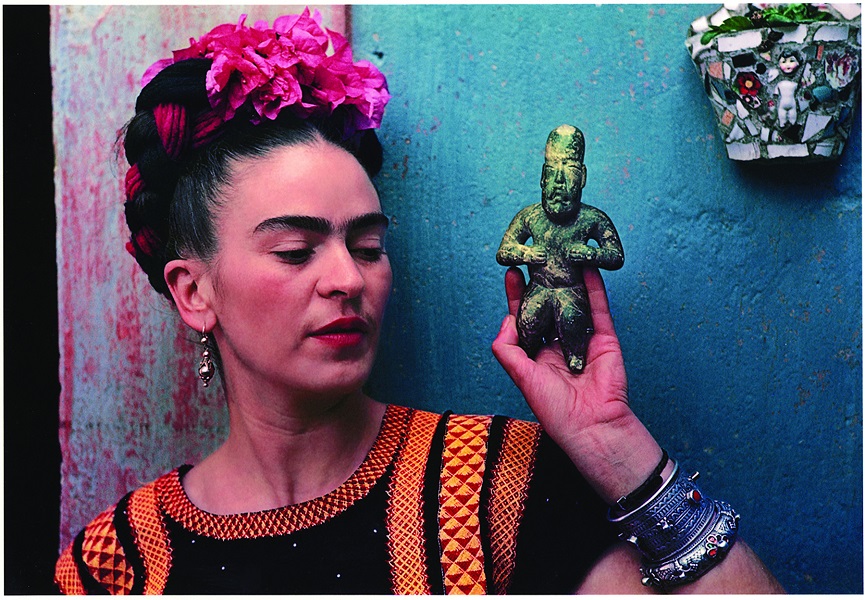
Frida Kahlo with Olmec figurine (1939). Courtesy of the Victoria and Albert Museum, ©Nickolas Muray Photo Archives.
Considering just how much Frida Kahlo is idolized today—via licensed and unlicensed t-shirts and socks and handbags and mugs and paper dolls and wall clocks—it’s not surprising that a museum would make the connection between the artist and her fashion. But more important than how her work has been merchandised is the artist’s own abiding interest in what it means to present oneself to the world. Some of her best-known works, after all, are self-portraits. The curators at the V&A Museum in London took this idea one step further, positing that her fashion and her art are intrinsically connected.
And in many ways, that idea bears out: in one room of the exhibition, Kahlo’s famous self-portraits parry with the dresses she wore in them. Self-Portrait with Monkeys (1943), for instance, is displayed with the simple white gown pictured in the canvas, alongside other, more colorful huipils and floor-length skirts.

“Frida Kahlo: Making Her Self Up” at the Victoria and Albert Museum. Photo by Daniel LEAL-OLIVAS/AFP/Getty Images.
Also notable is the room that displays Kahlo’s last days as she struggled with her life-long health problems, the amputation of her leg below the knee in 1953, and her subsequent death a year later from complications from that procedure. On display are her hand-decorated medical corsets and a prosthetic leg with a silk-appliquéd leather boot attached to it. Whether or not Kahlo’s art and clothing were intrinsically linked, both offered an outlet for her to shift her presentation—giving her armor and control over the way others would see her. An artist’s eye doesn’t stop at the canvas.